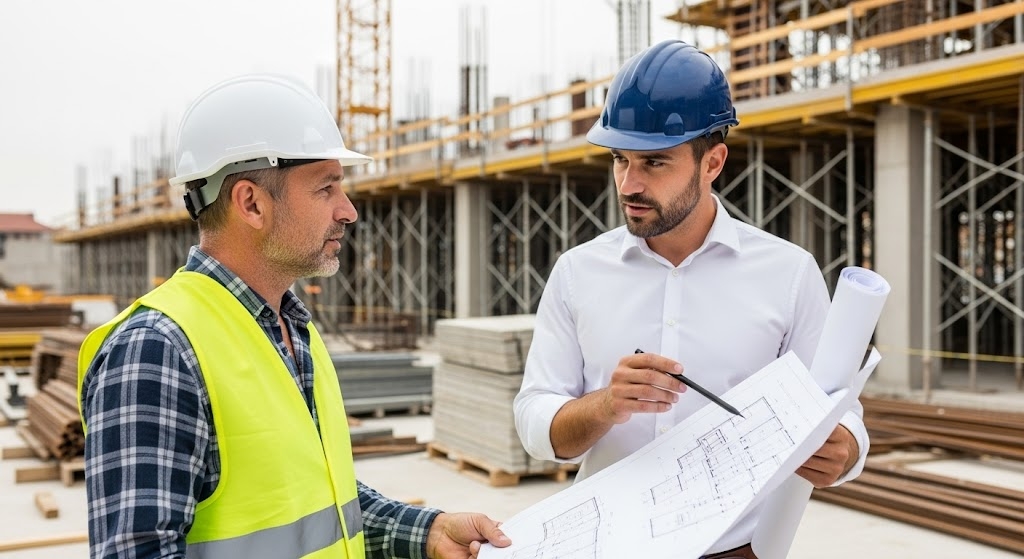The Role of the Construction Owner on a Project
When it comes to construction projects, the construction owner plays the leading role in ensuring that the project is completed successfully.
When we talk about a construction owner, we’re referring to the organization, typically represented by designated construction directors and managers, that initiate the construction project and carries the ultimate responsibility for its success. Owners will identify, through procurement processes or past experiences, specifically skilled partners to help design and build their projects.
In this article, we will explore the various responsibilities and duties of the owner in a typical construction project. This is a simplified list of what are fairly complex, multi-faceted responsibilities.

1. Project Planning and Design
At the outset of any construction project, the owner is responsible for defining the scope, budget, and timeline of the project. The owner will work with their internal project team and stakeholders to establish the project's goals and objectives, develop and approve key artifacts like a budget and schedule, and determine high level design requirements.
While a construction owner will bring in contracted partners (e.g. architects, engineers, etc.) to help with the more technical design of their project, they still must ensure that designs meet all applicable codes, regulations, and standards. Given that codes, regulations, and standards will vary depending on jurisdictions and geographies, it’s important for owners to be knowledgeable about this area in-house.
2. Financing
In addition to planning and design, the owner is responsible for financing the project.
This includes securing funding sources, managing the budget, and ensuring that the project is completed within the approved budget. The owner is responsible for ensuring the timely flow of cash in terms of payments. This means needing to review any payment requests from external parties, ensure that claimed work has been done to expectation, and then process the payment out. This keeps contractors happy as they are being paid for their completed work in a timely manner.
The owner must also ensure that all financial transactions are properly documented and reported. It is key to have a strong, universally understood system of checks and balances. Modern software platforms play a key in helping construction owners track every dollar.
3. Contractor Selection
The owner is responsible for selecting the contractors who will be responsible for designing and actually constructing the project. This involves issuing a request for proposal (RFP) or request for bid (RFB), evaluating proposals or bids, and selecting the contractor(s) who are best suited for the project. The owner must ensure that the contractor(s) selected have the necessary experience, qualifications, and resources to complete the project successfully.
4. Contract Negotiation
Once the contractor(s) have been selected, the construction owner is responsible for negotiating the contract(s) with the contractor(s). This involves defining the scope of work, setting the terms and conditions of the contract, and establishing a payment schedule. The owner must also ensure that the contract(s) include all necessary provisions, such as insurance requirements, change order procedures, and dispute resolution mechanisms.
5. Project Oversight
Throughout the construction process, the owner is responsible for overseeing the project to ensure that it is progressing according to plan. This involves monitoring the contractor's progress, reviewing and approving change orders, and resolving any issues that arise during the construction process. The owner must also ensure that the project is completed on time and within budget.
This is where a powerful construction management tool is crucial for owners. While many rely on Excel, meetings, and emails today, this is when a modern and cloud-based solution is crucial to having the right data on hand at the right time. We are running a webinar on the use of Excel in construction projects, check out details here!
6. Quality Control
The construction owner is responsible for ensuring that the project meets all quality standards and specifications. This involves reviewing and approving the contractor's work, conducting inspections, and testing materials and equipment. The owner must also ensure that any deficiencies or defects are identified and corrected promptly.
7. Project Closeout
Once the construction is complete, the owner is responsible for closing out the project. This involves ensuring that all punch list items have been completed, all necessary approvals and permits have been obtained, and all final payments have been made to the contractor(s). The owner must also ensure that all warranties and guarantees are in place and that all necessary documentation is properly filed.
Once the project is closed, it is key for construction owners to be able to hold on to that historic data for future reference or modeling. This is where isolated Excel spreadsheets or 3rd party systems they won’t be able to access 1 or 2 years later are not useful.
Conclusion
In conclusion, the construction owner plays a leading role in the success of any construction project. From project planning and design to project closeout, the owner is responsible for ensuring that the project is completed on time, within budget, and to the required quality standards. By understanding the responsibilities and duties of an owner, everyone involved in a construction project can help ensure that the project is successful and meets all objectives.







